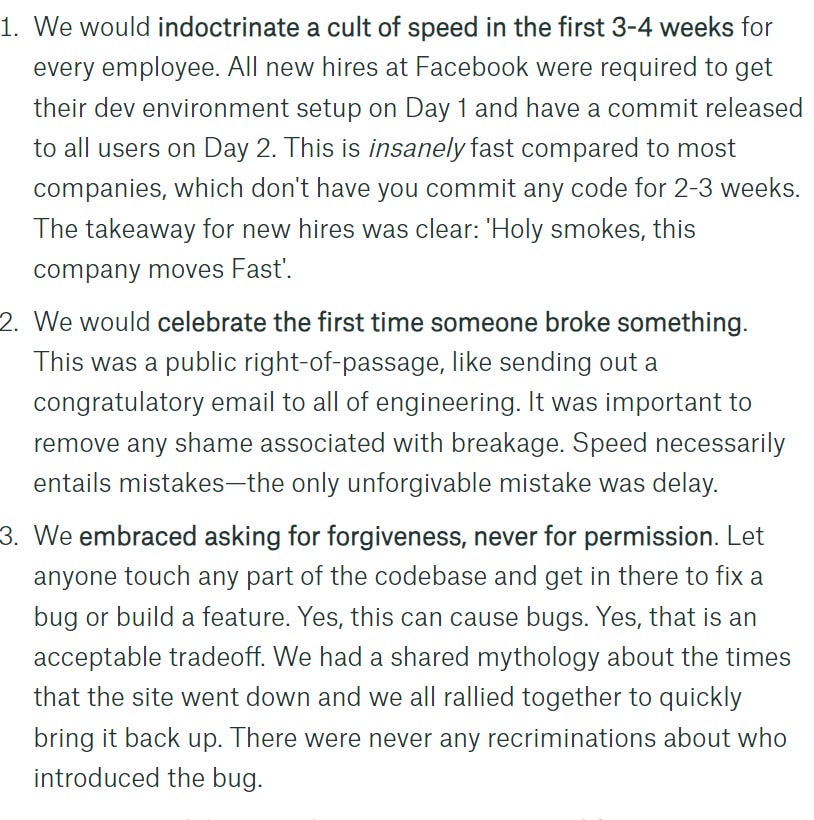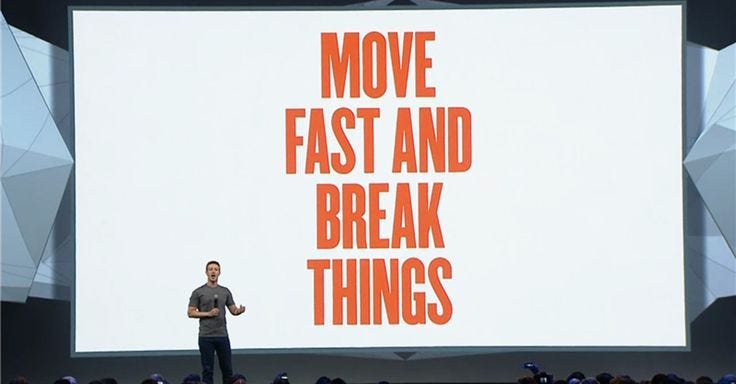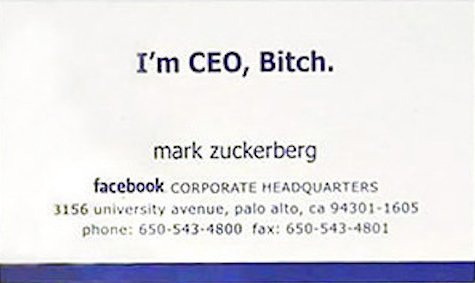Peter Drucker famously said, “Culture eats strategy for breakfast.”
It’s a pithy phrase that encapsulates a certain truth: a company’s culture often matters more than its strategy — no matter how well-devised it is or how pretty the strategy deck.
So how should founders & leaders of early-stage companies think about building culture?
Actively thinking about it is a good first step. Many don’t even bother with that.
But culture develops whether leaders are intentional about designing it or not.
But company cultures develop whether there’s specific intent or not
And early on they usually do as a reflection of the personalities, preferences, and peculiarities of founding teams & early staff
The culture becomes what they reward, punish, and tolerate—for better or worse
— Emeka Ajene ✍???? (@eajene) July 29, 2022
Admittedly, company culture can be a vague concept, and how to build it can be fuzzy.
It’s not about lofty statements or values, nor perks and social traditions. Comfortable couches, a colorful office, and beer Fridays are nice, but what ultimately matters are actions taken.
Culture is an outcome of what you reward, punish, and tolerate. And it’s established through actions — visible, clear, and costly actions.
Here’s what that looks like in practice.
Google: Building a culture of innovation
Google famously had a ‘20% time’ rule that encouraged employees to devote one full day every week to a personal project with the potential for significant company impact.
Founders Sergey Brin and Larry Page wrote in the Form S-1 IPO filing, “We encourage our employees, in addition to their regular projects, to spend 20% of their time working on what they think will most benefit Google.”

It’s one thing to say your company values creativity and innovation, it’s another thing entirely to encourage employees to pause their regular duties and focus on ideas & projects that will mostly go nowhere.
Near-term company productivity takes a meaningful hit as a result of the policy. But this visible & clear cost undergirded a culture of innovation, creativity, and experimentation and provided a powerful signal to all employees.
Amazon: Building a culture of clear thinking & rational decision-making
In June 2004, Jeff Bezos sent an email banning the use of PowerPoint at Amazon.
He insisted that those who have ideas to share come to meetings with “well-structured, narrative text” instead.

From that point on, written documents became Amazon’s predominant meeting deliverable. Meetings start with ~20-minute silent periods for attendees to read and take notes, followed by discussions.
The act of writing clarifies thinking, and it scales across an organization in a way that presentation slides don’t.

Still, there’s a cost here.
Today at Amazon, “Nothing is built unless there is a document that backs it,” according to one eight-year Amazon veteran who penned this post on the perils of Amazon’s writing culture. And otherwise strong performers who have weaker writing skillsets might find themselves at a disadvantage when trying to influence others at the company.
Nonetheless, the practice is a strong daily signal to everyone that clear thinking & reason are highly valued.
Zappos: Building a culture where customers come first
American online shoe and clothing retailer Zappos has long been recognized as one of the world’s most customer-centric companies.

And while it offers free shipping, free returns, and the like, customer-centricity is about people, not policies.
So as part of their onboarding process, the company requires all new hires to shadow senior customer service agents and then answer customer calls themselves. At the end of the onboarding period, new hires are offered a significant bonus (once as high as $4,000) to quit.

Having everyone — from engineers to marketers to accountants and beyond — answer customer service calls has large opportunity costs. And paying employees a bonus of several thousand dollars is a clear, direct cost.
But these and other visible and costly initiatives signal to everyone at Zappos that customers come first — and if you choose to stay at the company you’re choosing to buy into that completely.
DoorDash: Building a culture of obsession with detail
Neither Tony Xu, CEO of American food delivery platform DoorDash (Nasdaq: DASH), nor his co-founders had a background in logistics or food delivery.
So they picked up driving gigs at FedEx and Domino’s Pizza to learn how delivery works. And during the first year of DoorDash’s operations, they were all among the Dashers that made deliveries to customers.

Based on their experience, they made that a core part of what it means to work at DoorDash. Today, all DoorDash employees have to do a “dash” at least once a month under the company’s WeDash program.

Having everyone — even your most senior team members — deliver meals to customers is a waste in opportunity cost terms. But it signals to everyone the importance of “operating at the lowest level of detail” and staying connected to customers and couriers.
Facebook: Building a culture of speed
Until 2014, Facebook used “Move fast and break things,” a now-famous quote from March Zuckerburg, as its internal motto.
And Zuckerburg proclaimed in a 2009 Business Insider interview, “Unless you’re breaking stuff, you’re not moving fast enough.”
While words are nice, culture building takes action.
Here are some of the actions the company took in the early days to establish the culture within its Engineering team, as described by Facebook’s first Director of Product Engineering Aditya Agarwal:

There’s a clear risk to having new engineers commit live code so early and to allowing everyone access to alter the company’s codebase, but this provides a powerful, company-wide signal that speed matters more than anything — even keeping the website up.

NVIDIA: Building a culture of agility & empowerment
“Nvidia may present itself as a pillar of the computing industry, but it remains an aggressive, founder-led firm that behaves like a startup.”
That’s according to The Economist in a 2021 article.
Today, the company has a market cap of ~$1.2 trillion, making it the sixth most valuable company in the world.
And under Founder & CEO Jensen Huang’s leadership, the company does things quite differently.
- It doesn’t have divisions or business units.
- It has a flat hierarchy with ~40 people reporting directly to Huang.
- Huang avoids 1:1 meetings, he holds group discussions instead.
- Meetings aren’t restricted by seniority; employees enjoy broad access to all information.
- Presenting one’s failures to others publicly is one of the company’s main rituals.
- Huang intentionally spends a lot of time explaining his thinking & decision-making. (According to him, “[This] empowers employees because they learn how leaders think through problems.”)
- The company doesn’t operate under periodic planning cycles and has no one-year or five-year plans. (“We just plan continuously,” says Huang.)
Here’s a 15-minute video of CEO Jensen Huang discussing how he runs the company:
Nvidia’s organizational structure and Huang’s management style are clearly not for everyone.
But, in addition to the impact they have operationally, they’re a powerful daily symbol of the company’s belief in meritocracy and organizational agility.
As the examples above highlight, cultures are built and bolstered by visible costly actions.
They tell employees: “We believe in this despite the cost. People who act accordingly do well here, while those who don’t do poorly.”
So if you’re a founder or a leader in an early-stage company, now’s a good time to think about the visible & costly actions that already exist or should exist at your organization. Take inspiration from the examples highlighted here.
But as mentioned before, a company’s culture can develop even without intention. So if you haven’t been intentional about your culture (or even if you have), here’s an exercise that’ll help you take stock of where things stand.
Ask your team to answer two questions:
- What makes people successful here? If a new hire asks how to get ahead or what she/he needs to do to get praise and recognition, what would your advice be?
- What makes people fail here? What’s frowned upon? What are the informal no-nos?
The answers you get are your culture as it exists today. Your culture is what you reward, punish, and tolerate — for better or worse.
Culture becomes what you reward, punish, and tolerate — for better or worse. https://t.co/NcwfrD00Cv
— Emeka Ajene ✍???? (@eajene) September 16, 2022
And culture compounds.






Share: